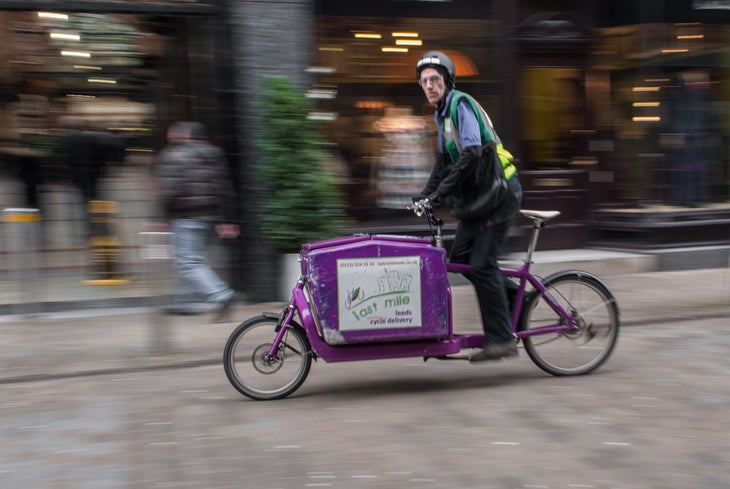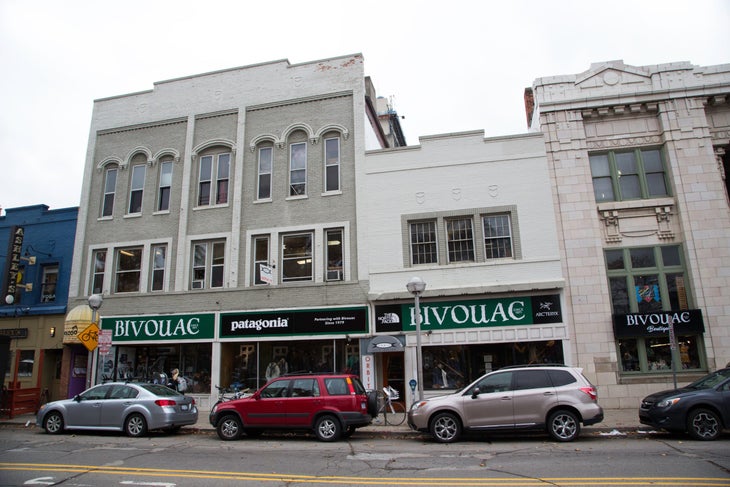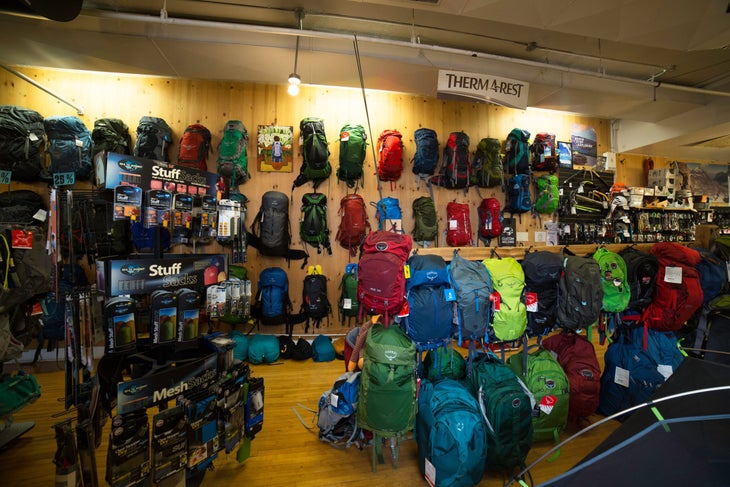Everyone in this industry knows the problem by now: the rise of online shopping has turned the traditional outdoor marketplace on its head. Consumers now turn to the internet first when they need new gear; brands seize the chance to sell it directly through their own websites or on Amazon; brick-and-mortar retailers are left scrambling. Less obvious? The solutions. OBJ has partnered with Mike Massey, founder of the online marketing platform Locally (which makes it easier for brands to refer buyers to nearby retailers for the sale), to examine how brands and specialty retailers can work together to everyone’s benefit. In this series, The Outdoor Retailer Playbook, we’ll examine several key principles for making the brand-retailer relationship even stronger in this brave new world.
Why It Matters
If you make and sell gear anywhere other than out of your garage, you have a “last-mile problem”: how to physically get your goods into the hands of people who want to buy them. Shipping is easy on the grand scale, as trucks, trains, and boats can relatively smoothly transport items in bulk to distribution centers around the world. But from there, things get tricky: moving a single pack, sleeping bag, or pair of skis that “last mile” from a distribution center to one customer’s house is much, much less efficient.
Making matters still more vexing is the 800-pound gorilla of shipping: Amazon Prime and its same-day delivery. The more shoppers get used to the combination of online shopping’s convenience plus near-immediate gratification, the more pressure builds to compete. But how?

The answer is in plain sight, according to Locally’s Mike Massey. “The last mile is built in for brands,” he said. “Many have 4,000 mini-warehouses across the country”—that is, their retail partners.
If vendors can efficiently connect with willing stores, they can provide online shoppers with a same-day delivery option courtesy of their neighborhood retailers. “Getting a product to go from a local store to the shopper is a great solution, rather than relying on a third party that is, in a lot of ways, your enemy,” Massey said. “Say you’re in Manhattan and you want a Patagonia item. Patagonia has the problem of spanning the last mile from Reno [where its distribution center is located], shipping via a jet, and then dropping off the package. Or they could connect you to a store nine blocks away that can courier the product to you in an hour.” Bonus: eliminating that extra shipment saves major carbon emissions.

The Locally platform rolled out such a service just last week, partnering with third-party delivery company Deliv to make items from subscribing vendors (such as The North Face, Brooks Running, and MSR) appear at a buyer’s doorstep within three hours (provided the buyer lives near an early-adopter retailer with that item in stock).
A similar service, Postmates, uses an Uber-style courier network to whisk online orders from retailers to customers; though it’s primarily a food delivery platform, any store can partner up to deliver “items that can be carried away by normal customers,” from backpacks to bike panniers. (Postmates lists REI in cities like Seattle and Denver.) Or retailers can set up their own delivery systems, like Ann Arbor’s Bivouac did (see below).
Beyond delivery, there’s one more simple way for brands and retailers to bridge that last mile together: have customers cover it themselves by converting online shopping into convenient pickups from a local retailer. But it’s essential to make that transition seamless, argued Massey. It’s not enough for a vendor’s dealer locator tool (or the shops themselves) to just share what items are in stock near a customer—whenever possible, that information should include a “call to action.”
“If I’m a retailer, I can show a product or brand on my Facebook page, saying ‘I carry this Arc’teryx jacket,’” Massey said. “But if I don’t have an easy way for shoppers to act on that information, such as reserving it, paying for a future pickup, or having it delivered, a lot of times they take my endorsement and go where they can actually make a purchase. If I market online and you don’t have a way to ask for the sale, it can be counterproductive.”
Success Story
When Bivouac, a specialty outdoor retailer in Ann Arbor, Michigan, rolled out free same-day delivery last July, vice president AJ Davidson acknowledged it was primarily a move to compete directly with Amazon. But it turned out that the step had more benefits than staffers expected: “Not only does it save us shipping charges and time packing up boxes, but it also provides great service,” he said. “And if someone is a mile away from us, it’s easier to just run it over really quick.”

Bivouac built the new same-day delivery option into its website’s ecommerce section. If a customer inputs an address within five miles of the store, a free delivery option window pops up. If a customer selects it, employees get a notification and then call the customer to set up a delivery time. Then someone will hop on a bike or into a car and drop off the order; Davidson himself often does a round of deliveries on his way home from work. Since Bivouac began offering the same-day service, 58 percent of eligible customers have opted for it; Davidson estimates the store does three deliveries on an average week.
It’s too soon to tell if the lickity-split delivery option will boost sales, but Davidson has high hopes. “Even if we can’t quantify how many new customers we’re getting, when a customer sees we do same-day delivery, it makes them less likely to want to shop on Amazon or at another store,” he said. “I don’t know if this has something to do with the fact that we’re doing okay in one of the shittiest years for retail since 2008. But doing unique things like this will help.”
Do Better
Interested in dabbling in new last-mile solutions? Follow these tips to pull it off smoothly.
- Prepare for the worst If you’re promising same-day delivery, make sure you have the staff to follow through. “Assume [you’ll get] the farthest-away delivery at the busiest time of day, and you’ve gotta have somebody who can do it,” Davidson said.
- Communicate with buyers Call customers to make sure they’ll be around to sign for the delivery. Without the insurance of a traditional shipping carrier, you’re on the hook for the product if something goes sideways.
- Make pickups (and all other digital sales pitches) easy Whether you’re promoting a product, boosting a newsletter, or announcing an event, all digital marketing efforts should include a way for customers to react, Massey said. Services like MailChimp can help shoppers sign up for your email newsletter, while Facebook or Eventbrite can handle event RSVPs or registrations. For product pitches, make sure there’s a way for customers to easily reserve, pay for, and/or pick up gear; Locally’s Buy It Locally tool injects that function into both local retailers’ ecommerce websites and vendor sites.
Next up in our Retailer Playbook series: how carefully curating products and distribution channels is essential to online selling success.


